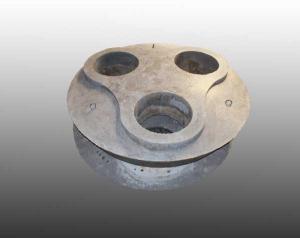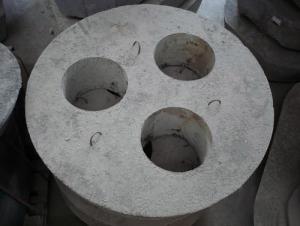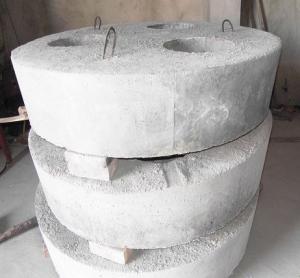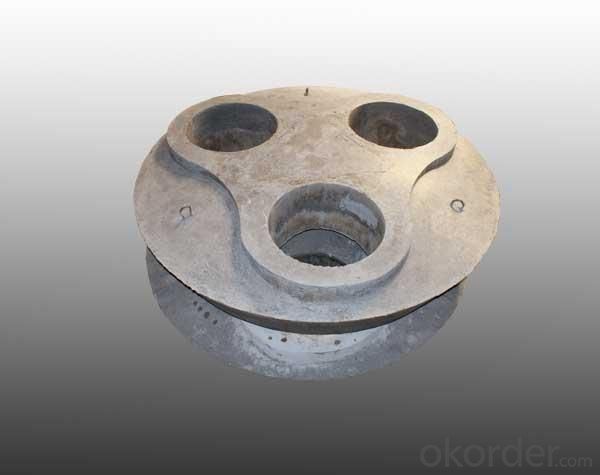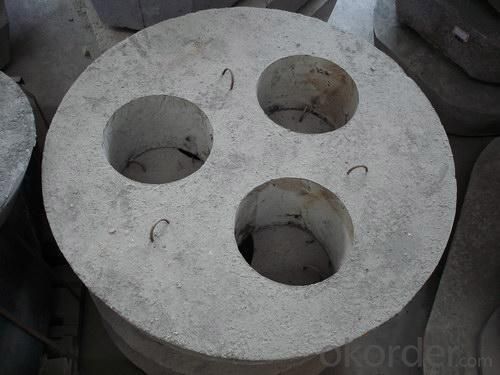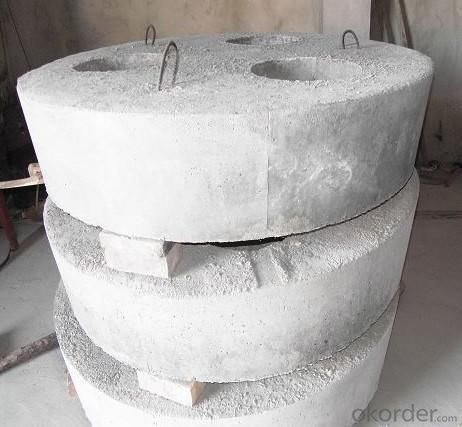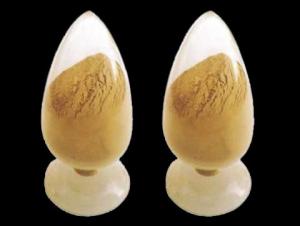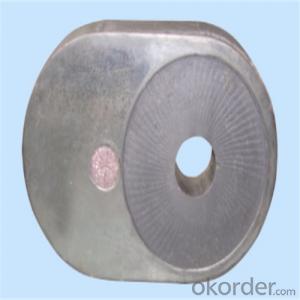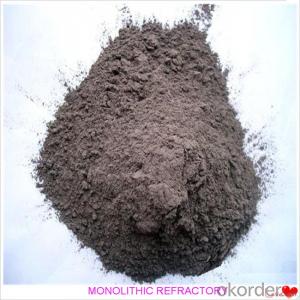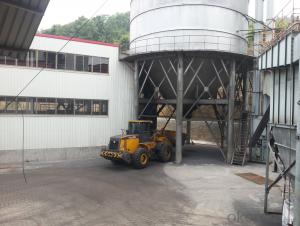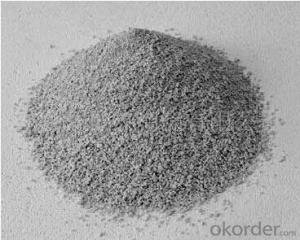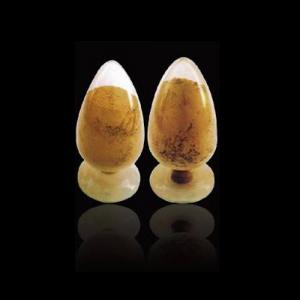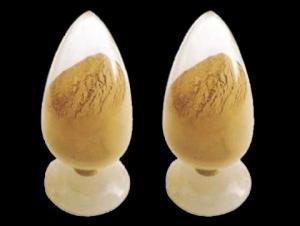Refractory Precast Shapes For EAF Roof
- Loading Port:
- China Main Port
- Payment Terms:
- TT or L/C
- Min Order Qty:
- 2 MT m.t.
- Supply Capability:
- 5000 Tons Per Month m.t./month
OKorder Service Pledge
OKorder Financial Service
You Might Also Like
General Information of Refractory Precast Shapes For EAF Roof
Made as per international standards, FIREF refractory pre-cast shapes for EAF roof is known for its excellent corrosion and scouring resistance of iron steel, long operating life and easy execution and mending. Further, the sizes could be customed.
Technical data of Refractory Precast Shapes For EAF Roof
Item | Refractory Precast Shapes For EAF Roof | |
Al2O3(%)≥ | 82 | |
MgO(%)≥ | — | |
CaO(%)≤ | 2 | |
SiO2(%)≤ | — | |
Fe2O3(%)≥ | — | |
Cr2O3 | — | |
Bulk Density (g/cm3)≥ | 110℃×24h | 2.9 |
1600℃×3h | — | |
C.C.S. (MPa)≥ | 110℃×24h | 30 |
1600℃×3h | — | |
M.O.R.(MPa)≥ | 110℃×24h | 6 |
1600℃×3h | — | |
Grain Size Distribution (%) | — | |
Heavy Burn Line Rate(1300℃×3h)(%) | — | |
Mould and Test Room of Refractory Precast Shapes For EAF Roof
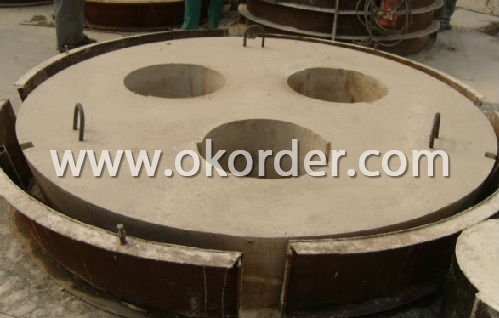
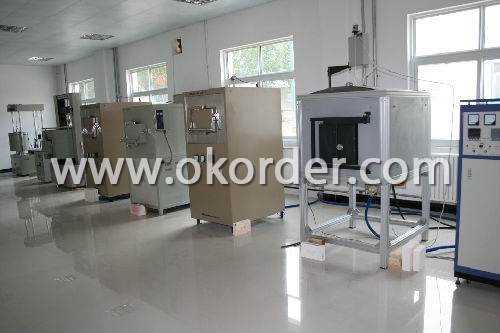
Feature of Refractory Precast Shapes For EAF Roof
Excellent corrosion and scouring resistance of iron steel
Easy execution and mending
Application of Refractory Precast Shapes For EAF Roof
FIREF refractory pre-cast shapes for EAF roof can be used for in situ casting or pre-casting for tri-angle area of UHP EAF roof.
- Q: How do monolithic refractories withstand the chemical attacks in aluminum furnace applications?
- Monolithic refractories are able to withstand chemical attacks in aluminum furnace applications due to their unique composition and properties. These materials are designed to have high resistance to the corrosive effects of molten aluminum and other chemicals present in the furnace environment. Firstly, monolithic refractories are made from a combination of different minerals, such as alumina, silicon carbide, and zirconia, which have high melting points and excellent chemical stability. These minerals act as a barrier between the corrosive substances and the underlying structure, preventing them from penetrating or damaging the refractory lining. Additionally, monolithic refractories are typically formulated with high levels of alumina, which provides them with exceptional resistance to chemical attacks. Alumina has a strong affinity for oxygen, forming a stable oxide layer on the surface of the refractory material, acting as a protective barrier against corrosive elements. This oxide layer also helps to reduce the rate of penetration of corrosive substances into the refractory lining. Moreover, monolithic refractories are often designed with a dense microstructure and low porosity. This ensures that there are fewer pathways for the corrosive substances to penetrate and attack the refractory material. The denser the material, the less susceptible it is to chemical attacks. Furthermore, monolithic refractories can be further enhanced by adding additives or binders that improve their resistance to chemical attacks. These additives can include various organic or inorganic materials that provide additional protection against corrosive substances. Overall, monolithic refractories are specifically engineered to withstand the harsh conditions of aluminum furnace applications. Their unique composition, high alumina content, dense microstructure, and resistance-enhancing additives all contribute to their ability to withstand chemical attacks and prolong the lifespan of the refractory lining in aluminum furnaces.
- Q: How do monolithic refractories withstand high temperatures in iron and steel production?
- Monolithic refractories are able to withstand high temperatures in iron and steel production due to their composition and unique properties. These refractories are made from a single, continuous material, which eliminates the need for joints or seams that could weaken under extreme heat. Additionally, they have high thermal conductivity and low thermal expansion, allowing them to effectively absorb and distribute the intense heat in the production process without cracking or breaking. Furthermore, monolithic refractories are highly resistant to chemical corrosion and erosion, which is crucial in the harsh environment of iron and steel production. Overall, the combination of these factors enables monolithic refractories to withstand the extreme temperatures involved in iron and steel production.
- Q: How are monolithic refractories repaired or replaced in iron and steel facilities?
- Monolithic refractories in iron and steel facilities are repaired or replaced through a process known as hot repair or hot gunning. This involves using specialized equipment to heat the damaged refractory material and remove it. The area is then prepared for new refractory installation, which is done by either shotcreting or gunning the new material onto the surface. This method allows for quick repairs and replacements, minimizing downtime and ensuring the efficiency and safety of the facility.
- Q: What are the specific requirements of monolithic refractories for blast furnace applications?
- To withstand the harsh conditions and high temperatures within a blast furnace, monolithic refractories used in these applications have specific requirements. These requirements encompass thermal stability, high strength, chemical resistance, erosion and abrasion resistance, low porosity, dense structure, and easy installation. Firstly, monolithic refractories must possess excellent thermal stability to endure the extreme temperatures encountered in blast furnaces. They should be able to resist thermal shock and maintain their physical and chemical properties even at high temperatures. Secondly, blast furnace conditions subject refractory linings to significant pressure and mechanical stress. As a result, monolithic refractories need to possess high strength and resistance to mechanical wear in order to withstand the weight of the burden and the movement of materials inside the furnace. Furthermore, blast furnace environments are highly corrosive due to the presence of molten metals, slag, and gases. Therefore, monolithic refractories should exhibit exceptional chemical resistance to prevent chemical reactions with these substances, which could lead to refractory degradation. Additionally, the materials being processed in a blast furnace can cause erosion and abrasion, resulting in wear of the refractory lining. Monolithic refractories used in blast furnaces should be able to withstand these erosive and abrasive forces, ensuring a longer service life. Moreover, blast furnace refractories should have low porosity to minimize the penetration of molten materials and gases. This is crucial as their penetration can cause refractory spalling and damage. Additionally, low porosity helps maintain the refractory lining's thermal stability and overall performance. Furthermore, the refractory lining in a blast furnace should have a dense structure to prevent the penetration of molten slag and metal, which could lead to refractory failure. A dense structure also aids in the refractory's heat insulation properties. Lastly, blast furnace refractories need to be easily installed and repaired due to frequent maintenance and repair requirements. Monolithic refractories offer the advantage of easy installation as they can be cast, gunned, or sprayed onto the refractory surface. This allows for quick repairs and reduced downtime. Overall, meeting these specific requirements ensures the durability and efficiency of the refractory lining, ultimately leading to improved blast furnace performance.
- Q: What are the key properties of monolithic refractories?
- The key properties of monolithic refractories include high strength, thermal shock resistance, erosion and abrasion resistance, good thermal conductivity, and excellent chemical resistance. These properties make monolithic refractories suitable for applications where high temperatures, harsh environments, and mechanical stresses are present, such as in furnaces, kilns, and reactors.
- Q: What are the main factors affecting the corrosion resistance of monolithic refractories?
- The corrosion resistance of monolithic refractories can be influenced by several important factors. To begin with, the refractory material's chemical composition plays a significant role. Refractories with high levels of silica (SiO2) generally exhibit greater resistance to corrosion due to silica's excellent resistance to acidic environments. Conversely, refractories with high alumina (Al2O3) content are more resistant to basic environments. Furthermore, the microstructure of the refractory material is crucial. A compact and well-bonded microstructure offers better corrosion resistance compared to materials with a porous structure. The presence of pores or cracks can allow corrosive substances to penetrate and attack the refractory, leading to its degradation. The temperature at which the refractory is exposed also affects its corrosion resistance. Higher temperatures can accelerate the corrosion process by promoting more aggressive chemical reactions. Additionally, thermal cycling, which involves subjecting the refractory to repeated heating and cooling, can create thermal stresses that contribute to material degradation. The type and concentration of corrosive agents present in the environment also impact the corrosion resistance of monolithic refractories. Different corrosive agents have varying levels of reactivity with refractory materials. For instance, acidic substances like sulfuric acid or hydrochloric acid can cause significant corrosion, whereas alkaline substances like calcium oxide can lead to a more gradual degradation. Moreover, mechanical stress applied to the refractory can influence its corrosion resistance. Mechanical vibrations, abrasion, or impact can weaken the refractory structure, making it more susceptible to corrosion. Lastly, the manufacturing and installation process can affect the corrosion resistance of monolithic refractories. Factors such as proper mixing, curing, and drying techniques can contribute to the development of a more resistant refractory structure. In conclusion, the corrosion resistance of monolithic refractories is influenced by factors including chemical composition, microstructure, temperature, presence of corrosive agents, mechanical stress, and manufacturing/installation processes. Understanding and managing these factors are crucial in selecting and maintaining the most suitable refractory material for a specific application.
- Q: What are the factors affecting the thermal conductivity of monolithic refractories?
- The thermal conductivity of monolithic refractories can be influenced by several factors. Firstly, the chemical composition of the refractory material plays a significant role in determining its thermal conductivity. The types and amounts of raw materials used can result in different thermal conductivities. For example, refractories with a higher content of insulating materials, such as alumina or silica, tend to have lower thermal conductivities. Secondly, the porosity of the refractory material also affects its thermal conductivity. Higher porosity means more air or gas-filled voids within the material, which act as thermal insulators. Therefore, refractories with higher porosity generally have lower thermal conductivities. Thirdly, the density of the refractory material is another important factor. Higher density materials usually have higher thermal conductivities as the particles are packed more closely together, allowing for better heat transfer. Moreover, the size of the grains in the refractory material can impact the thermal conductivity. Smaller grain sizes result in higher contact points between particles, facilitating better heat transfer. Therefore, refractories with smaller grain sizes typically have higher thermal conductivities. Additionally, the temperature at which the refractory material operates can affect its thermal conductivity. Some materials may exhibit changes in thermal conductivity at different temperature ranges. For instance, certain refractories may have lower thermal conductivities at low temperatures but higher conductivities at high temperatures due to changes in their crystal structure. Furthermore, the presence of moisture or water in the refractory material can significantly decrease its thermal conductivity. Water has a relatively low thermal conductivity, so even a small amount of moisture can act as an insulating barrier within the material. The microstructure of the refractory material, including the arrangement and orientation of its grains, can also affect thermal conductivity. A well-aligned microstructure with good interconnectivity between the grains can enhance heat transfer, resulting in higher thermal conductivity. In conclusion, the thermal conductivity of monolithic refractories is influenced by factors such as composition, porosity, density, grain size, temperature, moisture content, and microstructure. Understanding and controlling these factors is crucial for optimizing the thermal performance of monolithic refractories in various high-temperature applications.
- Q: What are some common applications of monolithic refractories in the iron and steel industry?
- Due to their superior performance and versatility, monolithic refractories find wide application in the iron and steel industry. In this industry, these refractories serve various purposes, such as: 1. Blast Furnace: To withstand high temperatures and chemical reactions, blast furnaces employ monolithic refractories in their linings. These refractories maintain the structural integrity of the furnace and provide insulation against heat loss. 2. Ladle Lining: Monolithic refractories line ladles, which transfer molten iron or steel from the blast furnace to the steelmaking process. They exhibit excellent resistance to thermal shock and erosion caused by the aggressive molten metal. 3. Tundish Lining: Tundish, an intermediate vessel that distributes molten steel to multiple casting molds, utilizes monolithic refractories in its lining. This ensures proper thermal insulation and prevents steel contamination during casting. 4. Electric Arc Furnace (EAF): The lining of EAFs, used in the steelmaking process, consists of monolithic refractories that withstand extreme temperatures and chemical reactions. They exhibit remarkable resistance to high heat and erosion caused by the molten metal and slag. 5. Induction Furnace: Monolithic refractories are also used in the lining of induction furnaces, which melt and refine metals. They provide insulation and protect the furnace structure from the high temperatures and chemical reactions occurring during the melting process. 6. Continuous Casting: Continuous casting machines require monolithic refractories in their linings to ensure smooth and consistent casting of molten steel. These refractories display excellent resistance to high temperatures, thermal shock, and erosion caused by the molten metal and slag. In summary, monolithic refractories play a crucial role in the iron and steel industry by enhancing the overall efficiency and productivity of the manufacturing process. They achieve this by providing durability, thermal insulation, and resistance to chemical reactions.
- Q: What are the advantages of using low-moisture castables in the iron and steel industry?
- There are several advantages of using low-moisture castables in the iron and steel industry. Firstly, low-moisture castables have a lower water content, which means they require less drying time. This is advantageous in the iron and steel industry where time is of the essence, as it reduces the overall production time and allows for faster turnaround. Secondly, low-moisture castables have superior strength and durability compared to traditional castables. They are able to withstand high temperatures and harsh environments without cracking or breaking. This is crucial in the iron and steel industry where extreme heat and abrasion are common, as it ensures the castables can endure the demanding conditions and maintain their structural integrity. Furthermore, low-moisture castables have excellent thermal shock resistance. This means they can withstand rapid changes in temperature without cracking or spalling, which is beneficial in the iron and steel industry where heating and cooling processes are frequent. Another advantage is that low-moisture castables have a higher density compared to traditional castables. This results in improved insulation properties, as they have a lower thermal conductivity. This is important in the iron and steel industry as it helps to conserve energy and reduce heat loss during various processes, ultimately leading to cost savings. Lastly, low-moisture castables offer versatility in terms of application. They can be used for various purposes in the iron and steel industry, such as lining ladles, furnaces, tundishes, and other high-temperature equipment. This versatility allows for greater flexibility in designing and constructing the infrastructure required for iron and steel production. Overall, the advantages of using low-moisture castables in the iron and steel industry include reduced drying time, increased strength and durability, enhanced thermal shock resistance, improved insulation properties, and versatility in application. These benefits ultimately contribute to more efficient and cost-effective operations in the iron and steel industry.
- Q: What are the factors to consider when selecting monolithic refractories for specific applications?
- When choosing monolithic refractories for specific applications, one must take into account several factors. These factors encompass the operating temperature, chemical environment, mechanical stress, and desired performance characteristics of the refractory material. The operating temperature plays a pivotal role and varies depending on the monolithic refractory. It is crucial to select a refractory material that can withstand the specific temperature range without experiencing thermal spalling or degradation. The chemical environment also plays a vital role. Different applications may expose the refractory to various chemicals, acids, alkalis, or gases. It is essential to choose a monolithic refractory that is chemically resistant to the specific environment to ensure durability and performance over time. Mechanical stress is another critical consideration. Certain applications may subject the refractory to high mechanical stress, such as abrasion, impact, or thermal shock. It is important to choose a refractory material that can withstand these stresses without cracking or failing. The desired performance characteristics of the refractory material should also be taken into account. This includes factors such as thermal conductivity, thermal expansion, density, and strength. The specific requirements of the application will dictate the necessary performance characteristics, and the refractory material should be chosen accordingly. Other factors to consider include the method of installation, availability, cost, and maintenance requirements. Some monolithic refractories may require specialized installation techniques, while others may be readily available and cost-effective. Additionally, the maintenance requirements of the refractory material should be considered to ensure ease of upkeep and longevity. In conclusion, selecting the appropriate monolithic refractories for specific applications necessitates careful consideration of factors such as operating temperature, chemical environment, mechanical stress, desired performance characteristics, installation method, availability, cost, and maintenance requirements. By taking these factors into account, one can choose a refractory material that will provide optimal performance and durability in the given application.
1. Manufacturer Overview
| Location | Henan, China |
| Year Established | 2007 |
| Annual Output Value | Above US$ 60 Million |
| Main Markets | Mid East; Eastern Europe; North America |
| Company Certifications | ISO 9001:2008 |
2. Manufacturer Certificates
| a) Certification Name | |
| Range | |
| Reference | |
| Validity Period |
3. Manufacturer Capability
| a) Trade Capacity | |
| Nearest Port | Tianjin |
| Export Percentage | 31% - 50% |
| No.of Employees in Trade Department | 21-50 People |
| Language Spoken: | English; Chinese |
| b) Factory Information | |
| Factory Size: | Above 36,000 square meters |
| No. of Production Lines | Above 5 |
| Contract Manufacturing | OEM Service Offered |
| Product Price Range | Average |
Send your message to us
Refractory Precast Shapes For EAF Roof
- Loading Port:
- China Main Port
- Payment Terms:
- TT or L/C
- Min Order Qty:
- 2 MT m.t.
- Supply Capability:
- 5000 Tons Per Month m.t./month
OKorder Service Pledge
OKorder Financial Service
Similar products
Hot products
Hot Searches
Related keywords
